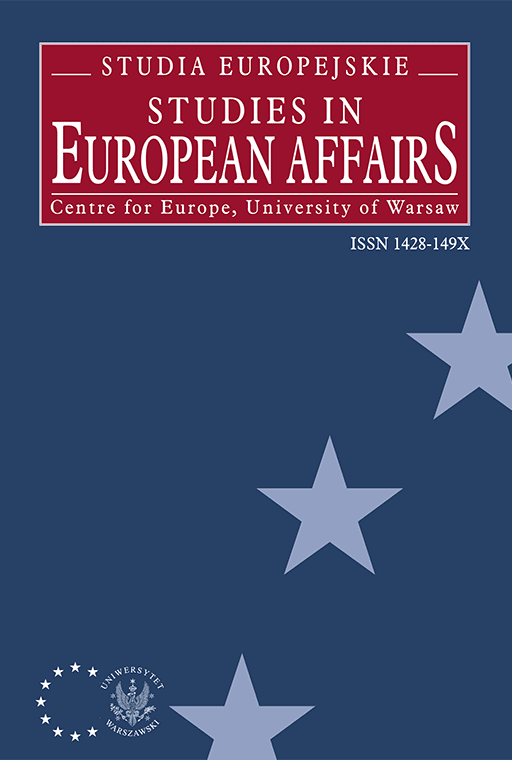
ISSUE: 4/2007
- Volume 44
- Number 4
- 2007
Subscribe NEWSLETTER
Studia Europejskie –
Studies in European Affairs
ISSN: 1428-149X
e-ISSN: 2719-3780
License
Articles published in the journal are under a Creative Commons Attribution – Non Commercial – No Derivatives 4.0 International License
Europejska integracja regionalna jako wzór dla współpracy gospodarczej państw Afryki Zachodniej?
European regional integration as model for economic cooperation of West African countries?
Abstract
The Economic and Monetary Union (EMU, Euro Area), within the European Union (EU) is by far the most advanced case of high-level regional integration among Western European countries. This extraordinary achievement of economic integration on a scale unprecedented scale in international economics came true on 1 January 1999 as the result of a long endogenous integration process. Some sources point out the Treaty establishing the European Coal and Steel Community signed in Paris on 18 April 1951 as the date this process started. For thesis examined in this paper it would be plausible to expand this historical perspective to 14th Century, when several quasi monetary agreements (monetary unions) – first ever in Europe – were concluded in German States. They tended towards achieving better economic and trade efficiency and dismantling regional monetary disparities and constraints. The range of circumstances under which international trade becomes beneficial mutually is broad. As analysed in this paper, proper trade efficiency results from customs union (EMU is based on a customs union) and monetary union. The former impacts the patterns of trade among member countries in two ways: trade creation and trade diversion. The latter eliminates currency volatility and exchange rate-related risks. In West Africa, an equivalent to the Euro Area level of regional integration is the CFA Franc area, consisting of eight member countries of the West African Economic and Monetary Union, WAEMU: Benin, Burkina Faso, Côte d’Ivoire, Guinea Bissau, Mali, Niger, Senegal and Togo. In these countries French post colonial political and economic context to some extent forced monetary integration with the French Franc. Today consequences of this are quite evident. However, a sequence of regional integration process in West Africa was opposite to the EU case. The monetary union WAEMU was established as the very first step towards economic integration while the monetary union in EU (EMU) was a crowning achievement of the regional integration process that took dozens of years to evolve. The Author examines intra trade benefits and constraints in West
African countries and concludes that neither the monetary union nor the customs union result in an expected intra trade integration actually happening there, so the EU and EMU integration experiences can hardly be transposable to circumstances of economic integration in West African countries.
Language: Polish
Pages: 139-160
How to Cite:
Harvard
Kolasiński, T. (2007) "Europejska integracja regionalna jako wzór dla współpracy gospodarczej państw Afryki Zachodniej?". Studia Europejskie – Studies in European Affairs, 4/2007, pp. 139-160.